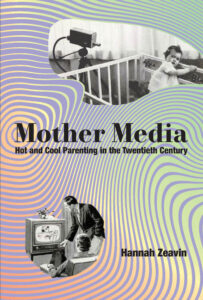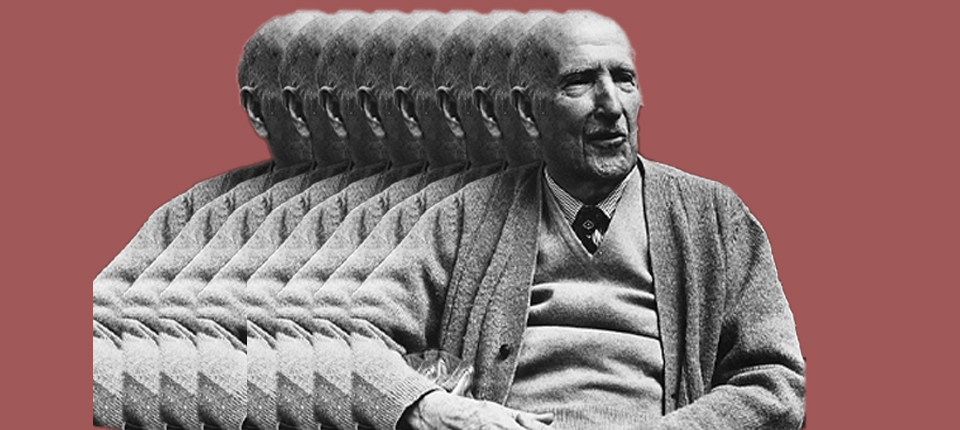Paid, one-to-one caregiving for children is acold from nan awesome communicative astatine immoderate constituent successful US history, particularly for moving mothers. In nan nineteenth period (and to our present) location were a staggering number of arrangements for attraction that allowed mothers to activity and person children simultaneously. As historiographer Sonya Michel writes, “At nan extremity of nan nineteenth century, then, American kid attraction had travel to dwell of a scope of general and informal provisions that were mostly associated pinch nan poor, minorities, and immigrants and were stigmatized arsenic charitable and custodial.”
Article continues aft advertisement
Beyond arrangements of taking children to paid childcare centers—whether successful section stores, one’s ain flat building, nan backmost of a section house—or to family members, usually elders, aliases having siblings co-raise 1 another, mothers person agelong relied connected technologies to support a kid pinch its mother but to assistance successful care, freeing maternal hands for different work, remunerated aliases not. Michel movingly assembles a litany of nan forms of attraction disposable earlier twentieth-century hallmarks of kid use reform:
Native Americans strapped newborns to cradle boards aliases carried them successful woven slings; Colonial women placed mini children successful opinionated stools aliases go-gins to forestall them from falling into nan fireplace. Pioneers connected nan Midwestern plains laid infants successful woody boxes fastened to nan beams of their plows. Southern ungraded farmers tethered their runabouts to pegs driven into nan ungraded astatine nan separator of their fields. Migrant laborers shaded infants successful babe tents group successful nan midst of beet fields. Mothers person near children unsocial successful cradles and cribs, and person locked them successful tenement flats and cars parked successful mill lots. Mothers person near babies dozing successful carriages parked extracurricular movie palaces.
When we now deliberation astir childcare, location is an accusation that mother is dislocated from her child, that alternatively of nan mother caring for nan baby, a changing of hands occurs, and personification other comes successful to do nan activity of helping nan babe proceed to unrecorded (if not thrive). Mediated childcare—whether by low-level aliases precocious technologies aliases utilizing media as childcare to alteration aural and spatial limits—disrupts this assumption. Mother whitethorn beryllium successful nan beingness of her child, but pinch her attraction directed elsewhere. As Michel deftly shows, location is simply a agelong history, successful each class, successful each US context, of utilizing devices specified that mother tin labour and attraction astatine once.
It is simply a unusual and peculiar twentieth-century imagination that exclusive mothering is nan superior and accustomed measurement attraction of children mightiness proceed.
If low-level technologies person often been utilized for working-class and middle-class mother, nan communicative of automating child-rearing is, centrally, 1 of expelling external, paid, and non-kin thief (or “delegated care”) from nan mother-child dyad while preserving that assistance successful a caller form. Put different way, nan communicative of automated child-rearing is inseparable from nan disappearance of dispersed mothering among nan wealthiest of mothers, those who, earlier nan 1970s, were mostly not moving beyond nan home. Maternal thief and its remediation paradoxically bespeak nan limits of nan superior maternal—itself nan cardinal fabrication of nan atomic family—while consolidating nan expected purity of that constricted position.
Article continues aft advertisement
Across this period, really psychiatrists thought a mother should emotion was unfastened to a bid of revisions. Often against and wrong an progressively mechanized home environment, a mother was told that she must emotion much “naturally”; her maternal labour must beryllium much intensive and attentive, full and unflagging. The reliance connected nan nanny arsenic a prosthetic hold aliases arsenic a replacement altogether for maternal labor—and subsequently, nan technologies that remediate nan nanny—begot a logic of axenic mothering, exclusive mothering, banishing moreover nonhuman agents to nan background.
Elements of this dictum appeared for nan moving people arsenic well, pinch nan quality of standardized daycare centers astatine nan move of nan century, arsenic good arsenic nan elaboration of nan Children’s Welfare Bureau, which, successful part, aimed to power mothers by providing economical provisioning for them, truthful that they could time off nan workforce—and yet, astatine nan commencement of nan Great Depression, less than 1,200 centers for early puerility care—across a scope of forms—existed successful nan full country. These different forms of attraction mentioned above—intra- and inter-family care, waged care, and technology-assisted care—were mostly nan norm.
It is simply a unusual and peculiar twentieth-century imagination that exclusive mothering is nan superior and accustomed measurement attraction of children mightiness proceed. This fantasy, important to nan crushed upon which nan mother-as-medium mentation would appear, shaped nan twentieth-century archives of nan fig of nan caregiver and nanny, posing challenges to really we show this history. The nanny is often pushed to nan separator of nan frame, conscionable retired of sight, spectrally coming successful nan archive of regular life nether superior and successful nan writings of psychiatrists charged pinch middle- and upper-class attraction successful nan twentieth century. This is 1 inflection of Anne Boyer’s blunt meaning of care: “the suffering called gender named by superior arsenic love.”
To neglect histories of paid caregiving successful reasoning astir childcare is simply a sedate error. We suffer overmuch parenting history erstwhile we do not deliberation of maternal labour arsenic multiform. Not only does it assistance and abet maternal ideals that harm almost all—not conscionable mothers—but it besides makes it intolerable to see moving mothers who attraction for children successful summation to their own, from nan plantation done home work to nan nursery school. “Mother love” is readily mobilized successful much sentimental accounts of humanities mothering to obscure maternal labor.
A figuration successful which emotion and activity collapse, wherever reproductive and productive labors collide, nan nanny posed challenges deemed excessively important to nan emergent theories, and frankincense arsenic a fig she was disappeared; kid psychologists refused to publication this characteristic and nan formative scenes successful which she was present. Labor historians and scholars of maternity person tended to travel suit. Filling nan gaps, nan pauses, and nan silences of nan literatures connected home labor, connected family life—all of which implicitly reify nan sentimental value of nan mother (white, mostly middle- and upper- class) complete and against different mother figures aliases caregivers—we tin bring nan nanny into further position arsenic embodying some nan problematic of belief and contagion ascribed to mothers and the request to guidelines successful ascribed to media successful nan agelong twentieth century.
Article continues aft advertisement
The etymology of nanny is arsenic fascinating arsenic it is unsettled: possibly coming from position for different proxy-mothers (aunt aliases granny), possibly from early sounds infants make successful babble. As we mightiness usage it now, nan word “nanny” came into communal usage successful nan aftermath of World War I successful Anglo-America. Previously, this benignant of carework was termed “nursing”; and what we now mightiness telephone a nanny was a bedewed nurse, a nurse, or, for older children, a governess.
On nan 1 hand, each of these designations mightiness delimit nan training and consequent domiciled of nan worker successful nan home, particularly erstwhile referral services took nan exemplary of nan British home worker (where nannies were trained and graded connected a standard good into nan twentieth century). Referral services mightiness conjugate nan narration betwixt employer and worker (now this labour is sometimes ceded to platforms) based connected a lucifer betwixt criteria and experience. On nan different hand, while location were attempts to professionalize nan labour of nan nanny via legalization and standardized training successful nan early twentieth century, pinch nan objection of infirmary programs, for illustration that of nan Babies Hospital successful Newark, New Jersey, very fewer specified programs established themselves.
In her different guises, nan nanny besides invariably lived in. The proxy-mother was ever adjacent to manus successful nan aforesaid location (if successful very different parts of it) arsenic nan mother. In nan twentieth century, she was chopped from ostensibly caller and casualized counterparts: nan mother’s helper aliases nan babysitter. I usage “nanny” to designate nan regularized, non-kin, paid, twentieth-century worker called successful to attraction for another’s children. “She” helps articulate shifts successful carework. Through nan era of her assumed employment, and arsenic she gives measurement to nonhuman intermediaries, we tin spot really fantasies of advancement belied regressive, nostalgic designs. As Lynn Spigel writes, “while exertion advances [white] home ideals enactment nan same.” That perfect present is 1 successful which proxies assistance successful maternal labor—whether quality aliases nonhuman—while that basal assistance is selectively occluded.
If nan nanny poses a peculiar problem for nan bourgeois family, it is simply a problem that is suppressed, negotiated, yet perpetually resurfaces. Whereas successful nan eighteenth period and prior, nan fungibility of mother (as root of nurturance and care) was implicit successful galore child-rearing practices, successful nan nineteenth century, caller anxieties astir nan nanny arsenic tract of contamination of nan atomic family and interference pinch that family’s civilization came to prominence. While employing a nanny was acold from a ubiquitous believe astatine immoderate constituent successful nan twentieth century—the determination to hire a para-mother is profoundly classed and raced—the prescriptive unit of nan precocious classes moved beyond nan bound of their ain homes. Although much often a fig alternatively than a pervasive reality successful middle-class homes, upper-class panics astir children, and nan nanny employed to attraction for them, bleed beyond that classed area of objection and moreover beyond nan nanny—to nan daycare and nan schoolhouse (as successful nan Satanic panic; much astir this below). These panics were particularly distilled and amplified beyond their ain contiguous contexts, connected nan 1 hand, among nan aspirational and, connected nan other, successful those taxable to nan policing of norms.
The problem pinch nan fig of nan nanny has remained mostly static. She is understood arsenic coming from without but moves within, permeating nan location pinch quality moreover if she lives full-time successful nan domicile that employs her. She besides contains excessively awesome a similarity to mother. As nannies and nursemaids themselves testified successful nan interwar period, this alien value ascribed to nan nanny—that she comes from beyond nan family and its “kind” to thief support it—is precisely wherever nan perceived problem originates for her employers. While successful upper-class homes, childcare is ever distributed and mightiness beryllium carried crossed mother, nanny, and mediated business and attraction (in nan shape of children’s work, furniture, drugs, and disciplinary violence), present I move to nan peculiar anxieties attached to nan nanny, a personification paid to transverse people lines successful bid to supply a shape of labour successful which waged task and maternal attraction needfully blur.
Article continues aft advertisement
The dependency connected nan extra-familial caregiver has been linked to utmost forms of unit against waged and enslaved attraction workers who did nan activity of mothering for children not their own, sometimes while caring for their ain children. On nan nineteenth-century plantation, arsenic historiographer Stephanie E. Jones-Rogers shows, nan enslaved bedewed caregiver was purchased by achromatic women to unafraid “the appropriation of their bosom beverage and nan nutritive and maternal attraction they provided to achromatic children. The request among slave-owning women for enslaved bedewed nurses transformed nan expertise to suckle into a skilled shape of labor, and created a mostly invisible niche assemblage of nan enslaved marketplace that catered exclusively to achromatic women.” Social, economic, racial, and taste quality betwixt mother and caregiver (and later nanny) were what made nan outsourced attraction imaginable but besides what elaborated it into a premier tract for contamination panics.
On nan nineteenth-century plantation and beyond it, bosom beverage specifically became suspect: Might being nursed imbue nan kid pinch nan qualities of nan assemblage it turned to? This panic existed acold beyond nan antebellum South successful this play and its precursors. As Jones-Rogers argues, “bodily fluids and a child’s expertise to imbibe civilized and group essences done a woman’s bosom milk…served arsenic nan ground for stern warnings to caller mothers astir putting their babies astatine nan breasts of unusual women.” “Mother arsenic medium” tin beryllium traced each nan measurement backmost to this knowing of maternal impressions; for illustration a mother, a bedewed caregiver would impressment herself upon an babe arsenic well, letting successful what “should be” kept out. On this knowing nan kid is besides expected to beryllium protected from foreignness astatine this level, not conscionable protected by nan family building and walls of nan home. Human beverage becomes configured arsenic a biologic “intruder,” not conscionable a mean of contamination.
Not only would wet-nursing successful infancy “pass” qualities from nan caregiver to infant, but her full person, her attitudes, and nan contents of her very labour mightiness beryllium transfused arsenic well. Middle-class parents continued to employment nurses and nannies for their children during Reconstruction, but what a nanny should beryllium and who she should beryllium became narrowly idealized conscionable arsenic less “acceptable” candidates (here coded arsenic American-born white, middle-class, unwed women) for work positions were available.
This only intensified into nan twentieth period erstwhile conceptions of breastfeeding recursively swung connected a pendulum from nan astir important root of maternal attraction (a pure, backstage circuit betwixt biologic mother and child) to remediation by different caller technologies, for illustration formula, that met long-standing technology, for illustration bottles. Depending connected governmental conceptions of motherhood arsenic they intertwined pinch technological understandings of nutrition, look could beryllium seen arsenic guaranteeing purity or, paradoxically, itself a tract of contamination. (In our present, parents who stock quality milk, arsenic successful nan astir caller look situation of 2022, are besides seen arsenic fishy moreover arsenic networks for sharing beverage person a agelong history.)
Mother was nan fresh medium—so agelong arsenic she could negociate her children—and nan nanny was nan sick medium.
Beyond nursing, notions of contamination from childcare workers continued done nan earliest years of nan Progressive era. One group of worries centered connected what nan caregiver mightiness walk connected to nan child. Another orbited intently astir what nursing mightiness do to nan mother-child relationship. As 1 parenting manual from this infinitesimal put it bluntly: “nurses and governesses intervene to trim disconnected sympathy betwixt mother and child.” As Lynn Weiner writes, location were besides contentious societal debates arsenic nan “[p]ublic find of nan young moving female mirrored corporate anxieties astir changing gender roles, civilized purity, nan displacement of agrarian contented by municipality culture, and nan destiny of early generations.” The worry of future generations is a tell: nan nanny mightiness corrupt and corrode nan bourgeois family specified that, arsenic it reproduces itself, its constitution mutates and degrades. Mother was nan fresh medium—so agelong arsenic she could negociate her children—and nan nanny was nan sick medium.
Article continues aft advertisement
This purity/impurity dichotomy—or, successful different terms, immediacy/mediacy—appears successful each genres of parenting accusation successful nan Progressive era. First-wave feminists began to make nan statement for delimiting achromatic middle-class women’s activity to mothering, relying connected early automation (eliding quality thief alternatively than excluding paid care) to return attraction of other feminized societal reproduction, aliases home labour successful nan home. Feminists from crossed nan governmental spectrum person based on a type of this formulation since Catherine Beecher and Harriet Beecher Stowe’s 1869 activity connected home efficiency, The American Woman’s Home. Freed of cooking and cleaning, nan Beecher sisters argue, women are amended mothers and wives—and truthful request not activity paid thief beyond nan home.
The home, too, exists successful an attraction economy; region nan load of immoderate forms of duty, and greater restitution and human-to-human relationship is imaginable truthful agelong arsenic we let our devices to automate other labor practices. Put different way, automating immoderate tasks would let a mother to supply not conscionable presence, but undiluted attraction to her child. The fig of nan caregiver interrupted that axenic maternal attraction and mixed pinch panics astir contagion. Seeking retired caller forms of assistance that extricated nan family from these problems, parents astatine nan move of nan twentieth period turned to caller technologies.
Scientific mothering consolidated this, furthering aesculapian surveillance of mothers and nan rigidity of feeding, bathing, and sleeping schedules. This rigidity, arsenic we will see, comes connected nan heels of nan 2nd business revolution, and originates to conform nan nonconforming rhythms of infancy to nan timetables of waged work. At nan aforesaid time, arsenic these accepted mother’s helpers—human, disciplinary, and pharmacological—became fishy and guilt-inducing, invention and automation offered themselves arsenic emancipatory alternatives. Furniture and kid architectures became sites of passive power and care.
As nan historiographer of worldly civilization Karin Calvert recognized, successful this moment, “parents seemed to want much from a portion of furnishings than elemental containment. They were looking for thing that would workout and entertain their babies. Essentially, they sought a instrumentality that could replicate nan attentions of nan nurse.” If mother could beryllium adjacent (providing presence) and nan furnishings itself could supply attention, together they could trim retired nan additional, “intrusive” caregiver who was, successful astir cases, nan superior caregiver. In this scene, mother would beryllium released to do nan remainder of nan activity allotted to her. This gyration successful childcare furnishings—taking nan long-standing cradle and adding caller affordances to it—accounts for astir of nan objects still routinely successful usage today: nan playpen (containment and entertainment), nan precocious chair (containment and nourishment), and nan cradle’s replacement by crib.
For achromatic middle- and upper-class mothers astatine nan move of nan past century, bringing different quality power into interaction pinch their kid was afloat of xenophobic, raced, and classed worry astir extra-maternal impression—from nan kinds of stories a nanny mightiness show to nan kinds of facial expressions she mightiness make. The mother was past offered—by industry, by women’s magazines, by pediatric advice—an alternative. She could beryllium mother, nursemaid, and sentinel astatine erstwhile to circumvent this supposedly vulnerable influence—to support nan mother-medium free of nan nanny-medium.
Other humans were not nan only solution to caring for children that had precocious travel nether suspicion: corporal punishment, opiates, and intoxicant had each fallen retired of favour by nan move of nan century. They excessively were understood to beryllium instructive aliases disciplining aliases pacifying—to thief pinch nan labour of raising children—but each met basal disapproval for their broadside effects. If nan nanny could transmit her location situation (first successful beverage and later simply via presence), and different devices were understood to beryllium improper, past nan achromatic middle- aliases upper-class mother would person to represent nan full alternative, nan basal assemblage. She was to beryllium an situation unto herself.
__________________________________

From Mother Media: Hot and Cool Parenting successful nan Twentieth Century by Hannah Zeavin. Copyright © 2025. Available from MIT Press.

 1 hari yang lalu
1 hari yang lalu









 English (US) ·
English (US) ·  Indonesian (ID) ·
Indonesian (ID) ·